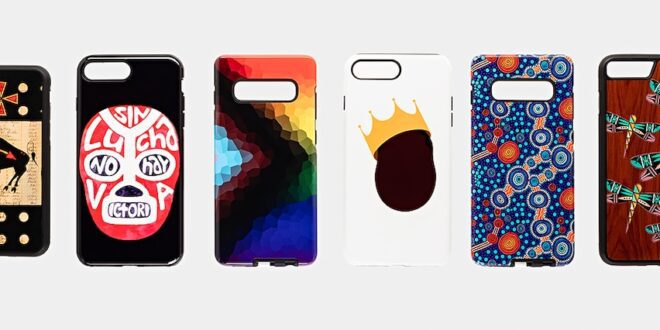Cellphone: Unseen Connections
Near the center of the National Museum of Natural History exhibition “Cellphone: Unseen Connections” is a case containing mineral samples that represent most of the 65 elements used in a typical smartphone. This display is one of the few reminders of the venue, whose collection provided the quartz, silicon and the rest. The bulk of the surprising show concerns not rock-solid natural history but fast-moving cultural developments.
The Exhibition
The 750-object exhibition was designed for a predominantly 13- to 25-year-old audience, according to organizer Joshua Bell, a cultural anthropologist who’s the museum’s curator of globalization. It opens with four large interactive video screens that turn visitors’ faces into emoji, alongside a wall display of the terms for cellphone or smartphone in multiple languages.
Expanding Cultural Impact
The show’s guide, who appears on placards throughout, is a long-haired cartoon cat named Captain Butterbean. One alcove is devoted to a mural of comic strips about how portable phones shape the lives of four adolescent Washingtonians, for better and worse. The spokescat and the comics are the work of writer Joanne Starer and artist Khary Randolph.
Obsolete Technology
One major part of the show centers on a few obsolete portable phones, notably the two-pound Motorola DYNATAC 8000x, the first handheld mobile cellular phone, which was introduced in 1983 and weighed nearly two pounds. To one side of the antiquated devices is an array of things supposedly supplanted by the smartphone, including a pay phone, a boombox and a Minidisc player. Technically, many of the included items are not extinct: Some people still make use of watches, books, credit cards, paper money and — ahem — newsprint copies of The Washington Post.
Global Impact
The other side of this exhibit is more illuminating, and more global. It includes emoji, decorative cellphone covers and a Ghanaian coffin designed to look like a giant mobile phone. Also in this area are introductions to M-Pesa, a Kenyan app for money transfers; a dictionary app for Myaamia, a threatened Algonquin language; and WeChat and WeChat Pay, apps used by an estimated 1.2 million Chinese speakers in both the Eastern and Western hemispheres.
Change Makers
Nearby is a gallery of “change makers,” people who’ve invented cellphone-related devices or social programs. The implications are upbeat, as is most of the show.
Environmental Impact
“Cellphone” doesn’t entirely avoid issues that might be considered harder — in both the senses of more complicated and more controversial. Included are servers and tower antennas, especially built for the show, and data about how much electricity cellphone networks use and how quickly consumers abandon their phones for new models (2.8 years). Also featured are displays about the human and environmental hazards involved in mineral extraction and mobile-phone recycling, the latter usually done in poorer countries. One panel flags the relatively sustainable phones made by smaller companies such as Fairphone and Teracube.
An Evolving Technology
While this may not matter to the intended audience, the exhibition is a little vague on the evolution of mobile phones from talk-only technology into the internet-linked handheld computers known as smartphones. It’s telling that the show includes a section on Japanese cellphone novels, known as keitai shosetsu, but doesn’t explain the difference between keitai (which means portable) and sumato hon, the Japanese phrase included in that multi-language display of terms for mobile phones.
The latter is just one Japanese transliteration of the word smartphone. (Another, more common one is sumato fon). Both terms are used less often in Japan than keitai — just as Americans refer to cellphones more often than smartphones. A lot changed during this linguistically little-acknowledged transition, and so quickly that’s it’s hard to keep it all straight. The Minidisc player, for example, was killed not by the cellphone but by the iPod. Then the iPod was swallowed by the iPhone, as smartphones’ capabilities and uses burgeoned.
An Informative Exhibition
Such connections go unseen in the exhibition, but much else is on display. Indeed, “Cellphone” is packed with information, artifacts and aspirations. It has almost as many flashy features as a brand-new smartphone.
Details
Date: Ongoing through 2026.
National Museum of Natural History, 10th Street and Constitution Avenue NW. naturalhistory.si.edu.
Check Also
Nedeljkovic makes NHL history with goal, assist.
Historic Night for Alex Nedeljkovic BUFFALO, N.Y. (AP) — Alex Nedeljkovic remembers admiring the way …
 Mind Uncharted Explore. Discover. Learn.
Mind Uncharted Explore. Discover. Learn.




